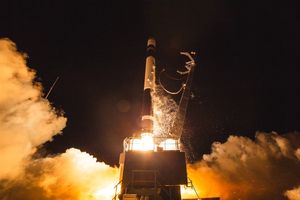
The global technology landscape is currently experiencing an unprecedented "AI Supercycle," a phenomenon characterized by an explosive demand for artificial intelligence capabilities across virtually every industry. At the heart of this revolution lies the semiconductor sector, which is witnessing a massive influx of capital as investors scramble to fund the specialized hardware essential for powering the AI era. This investment surge is not merely a fleeting trend but a fundamental repositioning of semiconductors as the foundational infrastructure for the burgeoning global AI economy, with projections indicating the global AI chip market could reach nearly $300 billion by 2030.
This robust market expansion is driven by the insatiable need for more powerful, efficient, and specialized chips to handle increasingly complex AI workloads, from the training of colossal large language models (LLMs) in data centers to real-time inference on edge devices. Both established tech giants and innovative startups are vying for supremacy, attracting billions in funding from venture capital firms, corporate investors, and even governments eager to secure domestic production capabilities and technological leadership in this critical domain.
The Technical Crucible: Innovations Driving Investment
The current investment wave is heavily concentrated in specific technical advancements that promise to unlock new frontiers in AI performance and efficiency. High-performance AI accelerators, designed specifically for intensive AI workloads, are at the forefront. Companies like Cerebras Systems and Groq, for instance, are attracting hundreds of millions in funding for their wafer-scale AI processors and low-latency inference engines, respectively. These chips often utilize novel architectures, such as Cerebras's single, massive wafer-scale engine or Groq's Language Processor Unit (LPU), which significantly differ from traditional CPU/GPU architectures by optimizing for parallelism and data flow crucial for AI computations. This allows for faster processing and reduced power consumption, particularly vital for the computationally intensive demands of generative AI inference.
Beyond raw processing power, significant capital is flowing into solutions addressing the immense energy consumption and heat dissipation of advanced AI chips. Innovations in power management, advanced interconnects, and cooling technologies are becoming critical. Companies like Empower Semiconductor, which recently raised over $140 million, are developing energy-efficient power management chips, while Celestial AI and Ayar Labs (which achieved a valuation over $1 billion in Q4 2024) are pioneering optical interconnect technologies. These optical solutions promise to revolutionize data transfer speeds and reduce energy consumption within and between AI systems, overcoming the bandwidth limitations and power demands of traditional electrical interconnects. The application of AI itself to accelerate and optimize semiconductor design, such as generative AI copilots for analog chip design being developed by Maieutic Semiconductor, further illustrates the self-reinforcing innovation cycle within the sector.
Corporate Beneficiaries and Competitive Realignment
The AI semiconductor boom is creating a new hierarchy of beneficiaries, reshaping competitive landscapes for tech giants, AI labs, and burgeoning startups alike. Dominant players like NVIDIA (NASDAQ: NVDA) continue to solidify their lead, not just through their market-leading GPUs but also through strategic investments in AI companies like OpenAI and CoreWeave, creating a symbiotic relationship where customers become investors and vice-versa. Intel (NASDAQ: INTC), through Intel Capital, is also a key investor in AI semiconductor startups, while Samsung Ventures and Arm Holdings (NASDAQ: ARM) are actively participating in funding rounds for next-generation AI data center infrastructure.
Hyperscalers such as Alphabet (NASDAQ: GOOGL), Microsoft (NASDAQ: MSFT), and Amazon (NASDAQ: AMZN) are heavily investing in custom silicon development—Google's TPUs, Microsoft's Azure Maia 100, and Amazon's Trainium/Inferentia are prime examples. This vertical integration allows them to optimize hardware specifically for their cloud AI workloads, potentially disrupting the market for general-purpose AI accelerators. Startups like Groq and South Korea's Rebellions (which merged with Sapeon in August 2024 and secured a $250 million Series C, valuing it at $1.4 billion) are emerging as formidable challengers, attracting significant capital for their specialized AI accelerators. Their success indicates a potential fragmentation of the AI chip market, moving beyond a GPU-dominated landscape to one with diverse, purpose-built solutions. The competitive implications are profound, pushing established players to innovate faster and fostering an environment where nimble startups can carve out significant niches by offering superior performance or efficiency for specific AI tasks.
Wider Significance and Geopolitical Currents
This unprecedented investment in AI semiconductors extends far beyond corporate balance sheets, reflecting a broader societal and geopolitical shift. The "AI Supercycle" is not just about technological advancement; it's about national security, economic leadership, and the fundamental infrastructure of the future. Governments worldwide are injecting billions into domestic semiconductor R&D and manufacturing to reduce reliance on foreign supply chains and secure their technological sovereignty. The U.S. CHIPS and Science Act, for instance, has allocated approximately $53 billion in grants, catalyzing nearly $400 billion in private investments, while similar initiatives are underway in Europe, Japan, South Korea, and India. This government intervention highlights the strategic importance of semiconductors as a critical national asset.
The rapid spending and enthusiastic investment, however, also raise concerns about a potential speculative "AI bubble," reminiscent of the dot-com era. Experts caution that while the technology is transformative, profit-making business models for some of these advanced AI applications are still evolving. This period draws comparisons to previous technological milestones, such as the internet boom or the early days of personal computing, where foundational infrastructure was laid amidst intense competition and significant speculative investment. The impacts are far-reaching, from accelerating scientific discovery and automating industries to raising ethical questions about AI's deployment and control. The immense power consumption of these advanced chips also brings environmental concerns to the forefront, making energy efficiency a key area of innovation and investment.
Future Horizons: What Comes Next?
Looking ahead, the AI semiconductor sector is poised for continuous innovation and expansion. Near-term developments will likely see further optimization of current architectures, with a relentless focus on improving energy efficiency and reducing the total cost of ownership for AI infrastructure. Expect to see continued breakthroughs in advanced packaging technologies, such as 2.5D and 3D stacking, which enable more powerful and compact chip designs. The integration of optical interconnects directly into chip packages will become more prevalent, addressing the growing data bandwidth demands of next-generation AI models.
In the long term, experts predict a greater convergence of hardware and software co-design, where AI models are developed hand-in-hand with the chips designed to run them, leading to even more specialized and efficient solutions. Emerging technologies like neuromorphic computing, which seeks to mimic the human brain's structure and function, could revolutionize AI processing, offering unprecedented energy efficiency for certain AI tasks. Challenges remain, particularly in scaling manufacturing capabilities to meet demand, navigating complex global supply chains, and addressing the immense power requirements of future AI systems. What experts predict will happen next is a continued arms race for AI supremacy, where breakthroughs in silicon will be as critical as advancements in algorithms, driving a new era of computational possibilities.
Comprehensive Wrap-up: A Defining Era for AI
The current investment frenzy in AI semiconductors underscores a pivotal moment in technological history. The "AI Supercycle" is not just a buzzword; it represents a fundamental shift in how we conceive, design, and deploy intelligence. Key takeaways include the unprecedented scale of investment, the critical role of specialized hardware for both data center and edge AI, and the strategic importance governments place on domestic semiconductor capabilities. This development's significance in AI history is profound, laying the physical groundwork for the next generation of artificial intelligence, from fully autonomous systems to hyper-personalized digital experiences.
As we move forward, the interplay between technological innovation, economic competition, and geopolitical strategy will define the trajectory of the AI semiconductor sector. Investors will increasingly scrutinize not just raw performance but also energy efficiency, supply chain resilience, and the scalability of manufacturing processes. What to watch for in the coming weeks and months includes further consolidation within the startup landscape, new strategic partnerships between chip designers and AI developers, and the continued rollout of government incentives aimed at bolstering domestic production. The silicon beneath our feet is rapidly evolving, promising to power an AI future that is both transformative and, in many ways, still being written.
This content is intended for informational purposes only and represents analysis of current AI developments.
TokenRing AI delivers enterprise-grade solutions for multi-agent AI workflow orchestration, AI-powered development tools, and seamless remote collaboration platforms.
For more information, visit https://www.tokenring.ai/.





